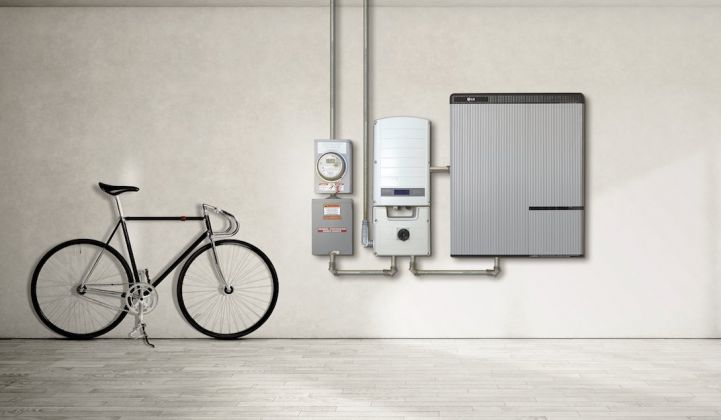Sunrun will get its chance to prove that home batteries and solar panels can stack up against traditional power plants.
The San Francisco-based company won a 20-megawatt bid in the forward capacity auction for ISO New England, which operates the electric grid in six Northeastern states. That auction ensures that enough grid capacity will be online in 2022.
Unlike previous winners, Sunrun did not bid a traditional power plant. Its product is a network of small solar and battery installations that will go into roughly 5,000 customer homes across the region. The company is promising to aggregate across those systems to deliver the necessary power to the grid, while also keeping the host customers happy.
Sunrun has vocally promoted this vision, as it expanded from simply installing solar panels into battery storage and grid services business lines. Many other companies and analysts share the belief that distributed resources, acting together, can provide a cleaner, more resilient and cheaper alternative to centralized grid architectures.
Real-world implementation of this model, sometimes referred to as a virtual power plant, has lagged behind its invocations in cleantech conferences and white papers.
In regulated states, small-scale pilots have begun. Some distributed batteries participate in wholesale markets through demand reduction mechanisms, which are less lucrative than capacity products. Swell Energy won a contract with utility Southern California Edison to put batteries in 3,000 homes; that was through a Preferred Resources Pilot designed to try out new, cleaner grid technologies.
With this win, Sunrun showed it could compete in an open auction alongside conventional resources like gas plants and hydropower.
“Definitionally, we can provide these services at lower costs than others,” Sunrun Executive Chairman Ed Fenster said of the successful bid.
A groundbreaking moment for virtual power plants
By power plant standards, 20 megawatts is small. But it's groundbreaking for virtual power plants to date. Sunrun completed 5,000 installations of its BrightBox home solar and battery system across the country by the end of 2018; now it must match that number in the six New England states in three years.
To accomplish this, Sunrun first has to sell customers on the core product: clean solar power and backup power from the battery. Going forward, customers will have the option of participating in the capacity service.
How exactly Sunrun explains the complexities of wholesale market participation remains to be seen. However, the company says it can use the expected revenue to lower the upfront price for customers, and that may be all the explanation that consumers need.
Winning the capacity revenue, and potentially lowering prices as a result, gives Sunrun new ammo for its sales pitch.
“We don’t have competitors who have done that yet, so we’re extending our competitive lead in the process,” Fenster said.
The first proof point will be whether Sunrun can sign up enough customers in the required region. Fenster is confident that this will happen, based on the company’s decade of experience identifying and acquiring customers.
“We feel very good about our forecasting abilities,” he noted.
The next proof point will come in 2022, when the obligation kicks in. Sunrun will have to control its fleet of thousands of batteries such that it reliably discharges the required amount of power within designated peak hours in winter and summer.
The company hired Audrey Lee to build out that algorithmic capability, which must balance customer use and grid participation across a vast number of devices in as many different locations. It has never been tested at so large a scale.
A leap forward in the business model
By 2022, though, Sunrun will have several years of experience overseeing thousands of batteries in the field. The fleet will also benefit from the law of large numbers, Fenster pointed out; a local disruption won’t affect the thousands of systems in other counties and states.
If it works as planned, this system will deliver benefits to three different groups. Homeowners get clean energy and backup power for a lower price; Sunrun makes money and gains a competitive edge; New Englanders as a whole pay a little less for capacity.
“It’s a real leap forward in the business model, and we’re excited to pursue more of it,” Fenster said. “There’s no reason other grid operators wouldn’t want to pursue a similar strategy.”
Becoming eligible to bid into the market took some procedural work, which will have to be replicated at other regional grid operators for the model to spread. States with vertically integrated utilities don’t offer this kind of market participation for third parties like Sunrun.
If the new model proves reliable at scale, other regions will have to take notice. The bullish view amounts to nothing less than structural change in how the U.S. supplies its electrical system: a shift away from the primacy of centralized power production.




